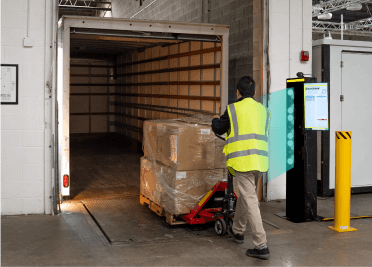Maintaining precision and compliance in labeling is essential for any production process. Mislabeling can lead to costly errors, regulatory fines, and damaged customer trust. At AbeTech, we provide solutions that ensure your labels are accurate, compliant, and seamlessly integrated into your operations. Discover how incorporating label verification systems into your workflows can enhance productivity, reduce errors, and improve overall operational efficiency.
Understanding Label Verification Systems
Label verification systems are critical for avoiding mislabeling, which can lead to regulatory fines, product recalls, or customer complaints. These systems ensure that labels applied to products are accurate and readable, confirming that they contain the correct information and meet formatting standards. Whether it's ensuring product information is correct or meeting barcode readability standards, label verification can prevent costly downstream issues, helping you stay compliant with industry regulations and maintaining customer satisfaction.
Integration Options for Label Verification Systems
Label verification systems can be integrated into your production lines, labeling equipment, and enterprise systems in various ways. Choosing the right method depends on your existing workflow and operational needs. Here are a few options to consider:
- Standalone Verification Stations
Standalone verification stations are ideal for environments where labels are applied manually or semi-automatically. These stations are placed at critical points in your workflow, where label accuracy is most important. Operators manually feed labels into the verification system, which checks for accuracy and readability.
Best Practices:
- Placement: Position the verification station where labels are applied or immediately after application to catch errors early.
- Training: Properly train operators to use the verification system efficiently, maximizing its potential.
- Maintenance: Schedule regular system maintenance to avoid disruptions or unexpected errors.
In one of our recent client projects, a manufacturing company integrated a standalone verification station, reducing labeling errors by 30% within the first month of implementation.
- Inline Verification Systems
For fully automated production lines, inline verification systems offer seamless integration. These systems are built directly into the production line, verifying labels in real-time as they are applied, eliminating the need for manual intervention.
Best Practices:
- Integration: Collaborate with AbeTech experts to integrate the system without disrupting your production line.
- Calibration: Regularly calibrate the system to maintain label accuracy throughout the production process.
- Monitoring: Implement a monitoring system to quickly address any issues that arise during verification, ensuring continuous operation.
By integrating inline systems, one of our clients saw a 15% boost in overall production efficiency due to reduced rework and downtime.
- Software Integration with Label Printing Software
Software integration connects label verification systems with your label printing software, verifying labels before they are printed. This approach reduces errors at the source, minimizing waste and the need for reprints.
Best Practices:
- Compatibility: Ensure your label printing software is fully compatible with the verification system to avoid integration issues.
- Updates: Keep the software updated to benefit from the latest features and security patches.
- Automation: Automate the verification process to eliminate manual oversight and potential errors, saving time and reducing operator burden.
By verifying labels before they even leave the printer, clients have reported up to a 20% reduction in labeling errors, leading to significant savings on material costs.
Integrating with Enterprise Systems
For a comprehensive approach, label verification systems can be integrated with enterprise systems such as Manufacturing Execution Systems (MES) or Warehouse Management Systems (WMS). This integration enables real-time data sharing and enhanced traceability, giving you complete visibility over labeling processes and ensuring regulatory compliance.
Best Practices:
- System Compatibility: Work with AbeTech’s IT specialists to ensure seamless integration between your MES/WMS and the verification system.
- Data Integration: Integrate data flows between the systems to ensure accurate and up-to-date information across your operations.
- Real-Time Updates: Configure your system to provide real-time updates and alerts, allowing quick action on any labeling discrepancies.
This level of integration not only enhances efficiency but also strengthens quality control, giving you a strategic advantage in highly regulated industries.
Conclusion
At AbeTech, we believe that integrating label verification systems into your existing workflows should be seamless and straightforward, allowing you to enhance both accuracy and efficiency. Whether you choose standalone stations, inline systems, or software integration, our team is here to help you select and implement the best solution for your needs.
By following best practices and leveraging our expertise, you can ensure that your labels are always accurate, compliant, and ready for the market. Contact AbeTech today to discover how we can help you optimize your labeling processes and maintain the highest standards of quality and compliance.











